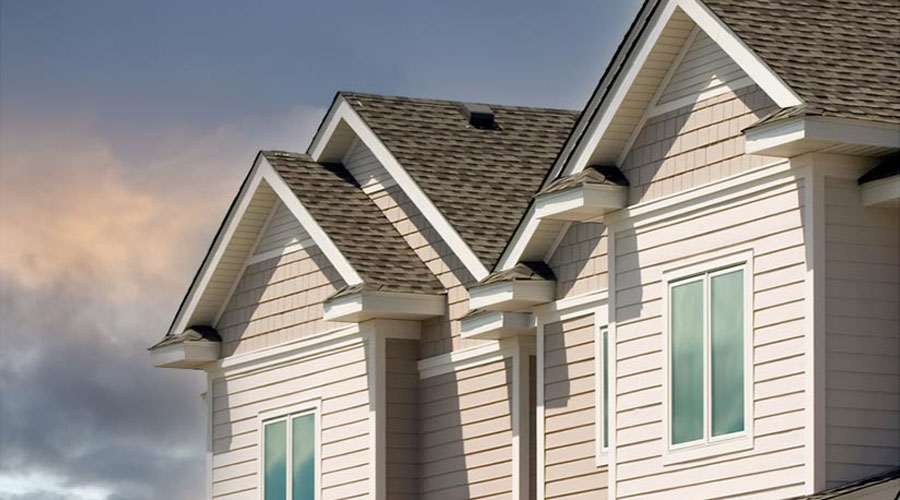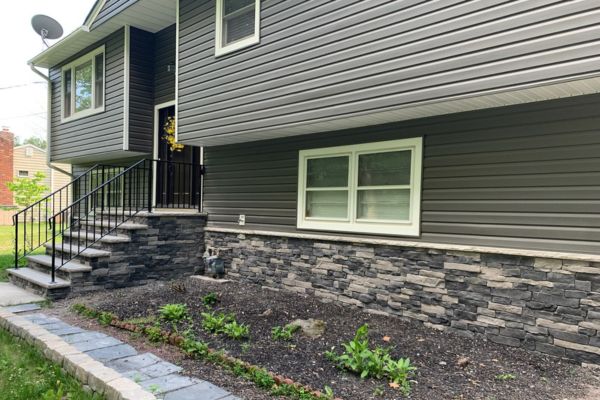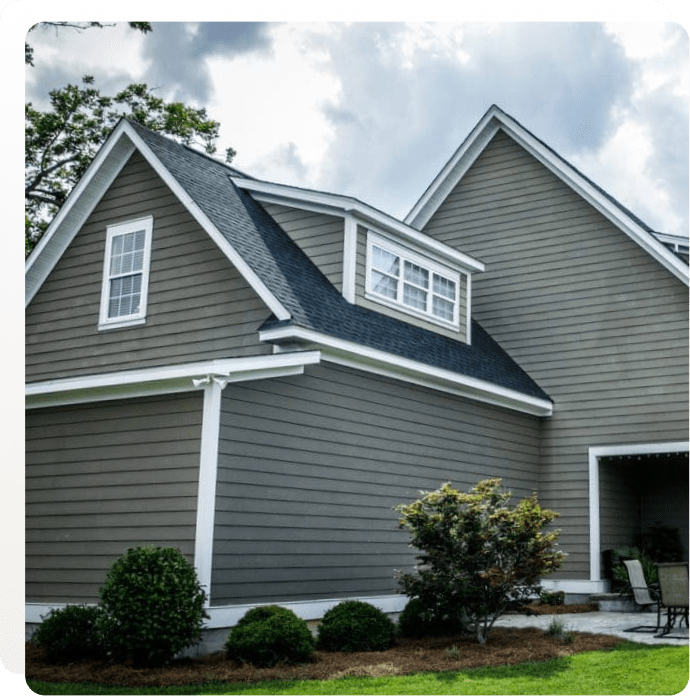The Necessary Guide to the Numerous Sorts Of Home Siding and Their Distinct Advantages
In the realm of home renovation, picking the best home siding is an important decision that impacts both aesthetic appeal and practical efficiency. With so lots of alternatives to take into consideration, which house siding material absolutely stands out for your specific project?
Timber Siding
Timber home siding, a prominent option for domestic outsides, uses an ageless aesthetic that incorporates all-natural charm with structural stability. This house siding product is offered in different designs, consisting of clapboard, roof shingles, and board-and-batten, allowing homeowners to tailor their appearance to match their style preferences. Timber exterior siding is normally crafted from resilient species such as cedar, redwood, or ache, which are understood for their resilience and capacity to endure environmental stress factors.
One of the key benefits of timber home siding is its exceptional insulation properties, which can add to energy efficiency and lower heating prices. Furthermore, timber home siding is biodegradable, making it an eco-friendly option when sourced sustainably. Normal upkeep, consisting of paint or discoloration, can lengthen its life expectancy and enhance its look, permitting home owners to preserve the natural appeal of the wood.
Nevertheless, prospective disadvantages consist of sensitivity to pests, rot, and weather damage, demanding sufficient therapy and upkeep - morris siding contractor. Regardless of these issues, when effectively cared for, wood house siding can provide a attractive and durable solution that enhances the character of a home while using a cozy, inviting ambience

Vinyl Siding
Plastic home siding has become a leading choice for home owners looking for a low-maintenance exterior alternative that integrates resilience and price. This flexible material is crafted from polyvinyl chloride (PVC), making it resistant to various weather, including wetness and UV rays. Consequently, plastic siding does not warp, rot, or fade, making sure lasting visual appeal.
Among the key advantages of vinyl siding is its considerable variety of styles and colors, permitting house owners to attain the desired seek their home without the need for constant repainting. In addition, plastic house siding is simple to set up, which can significantly minimize labor costs throughout construction or renovation jobs.
Plastic siding additionally contributes to energy performance. Several choices attribute insulation support, which improves thermal efficiency, assisting to keep comfortable indoor temperatures and potentially reducing power costs. In addition, its smooth surface promotes simple cleansing, calling for only regular washing with a yard hose to remove dust and particles.
Fiber Cement Home Siding
Fiber concrete exterior siding has actually acquired grip amongst homeowners and contractors alike as a result of its impressive combination of longevity and aesthetic versatility. Composed of a mix of concrete, cellulose, and sand fibers, this home siding alternative is crafted to hold up against extreme climate condition, including high winds, heavy rainfall, and temperature changes, making it a durable option for residential outsides.

Among the key advantages of fiber concrete home siding is its resistance to insects, such as termites, and its non-combustible nature, offering enhanced fire security. morris siding contractor. Additionally, it is available in a vast selection of styles, appearances, and colors, enabling property owners to accomplish their preferred aesthetic without giving up performance
One more benefit is its reduced upkeep demands; fiber cement siding normally needs paint or staining every 5-10 years, which is less regular than various other materials. Its longevity adds to a lower general cost of ownership, as it decreases the need for constant repairs or replacements.
Eventually, fiber my site concrete house siding represents a superb investment for those seeking a durable, appealing, and flexible exterior option, integrating both form and feature to improve the home's aesthetic appeal.
Steel Siding
The attraction of metal house siding exists in its durable durability and modern-day visual allure, making it a preferred choice for modern design. Available in materials such as aluminum and steel, metal siding offers a variety of coatings and shades, enabling homeowners to accomplish an individualized look that enhances their design vision.

Energy effectiveness is another considerable advantage, as many metal home siding items are designed with insulation alternatives that aid manage indoor temperatures. This can cause reduced energy expenses with time. Additionally, metal house siding is commonly recyclable, making it an eco-friendly choice for sustainability-minded home owners.
The installment procedure for steel exterior siding can be relatively straightforward, leading to a quicker turnaround time for construction jobs. In general, steel home siding combines capability and design, making it a functional alternative for those seeking a visually appealing and enduring outside surface.
Block and Stone House Siding
Block and stone home siding attracts attention as a classic option that enhances the aesthetic charm of any home. Understood for their durability and low maintenance, these products supply an extraordinary roi while elevating the property's curb charm. Available in different shades, structures, and patterns, block and stone can be tailored to suit diverse architectural styles, from traditional to modern-day.
One of the main advantages of block and rock home siding is their power performance. Both products have all-natural protecting buildings that assist control indoor temperature levels, possibly minimizing cooling and heating costs. Furthermore, they provide remarkable fire resistance contrasted to other home siding choices, adding to navigate to this site improved security.
Another advantage is their long life. Block and rock can last for decades, usually requiring marginal maintenance beyond occasional cleaning. Unlike wood exterior siding, they are invulnerable to bugs and rot, making sure a lasting outside that endures the elements.
Conclusion
In summary, the option of house siding substantially influences a home's aesthetic allure, energy performance, and upkeep demands. Each type of home siding-- whether timber, vinyl, fiber metal, concrete, or block and rock-- offers one-of-a-kind benefits customized to various house owner preferences and ecological problems.
One of the main advantages of wood home siding is its excellent insulation residential properties, which can contribute to energy performance and lower home heating costs. Furthermore, timber exterior siding is eco-friendly, making it an environmentally pleasant option when sourced sustainably.One of the main benefits of metal siding is its resistance to various environmental variables.Power efficiency is one more substantial advantage, as several metal exterior siding items are designed click here to read with insulation options that assist manage interior temperature levels. Each type of exterior siding-- whether wood, plastic, fiber metal, cement, or brick and stone-- offers distinct advantages customized to different home owner preferences and environmental conditions.